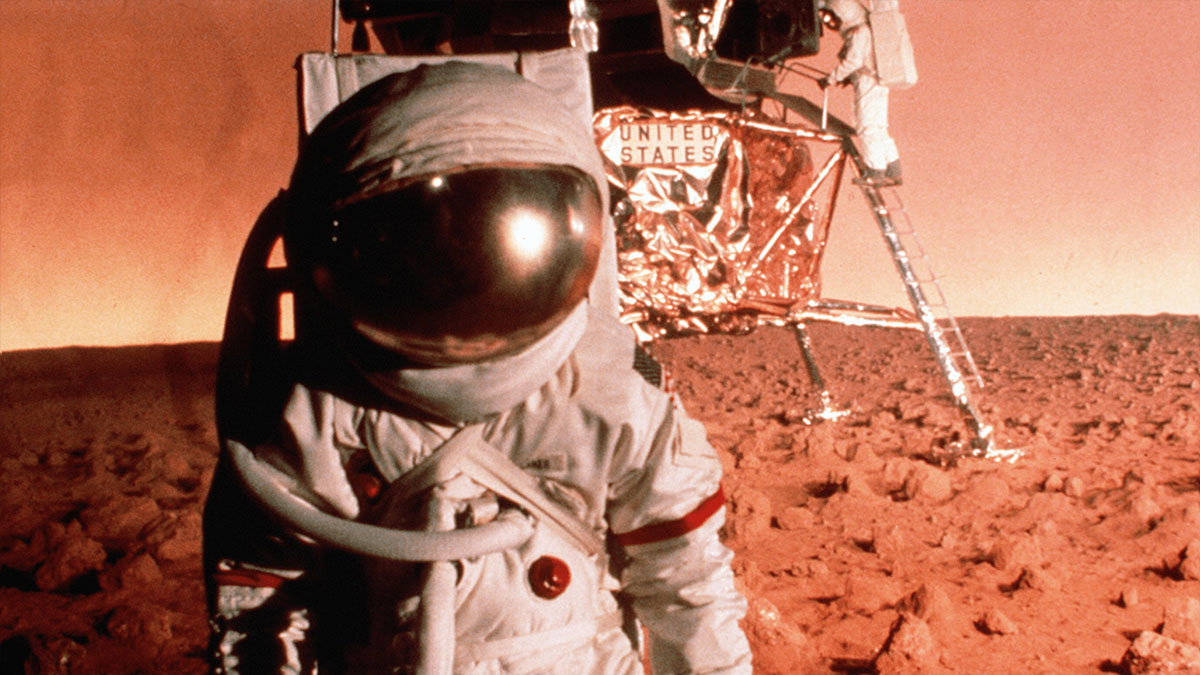
(C) Capricorn One Associates 1978
The famous director of “Capricorn 1” also joined NASA! ? Space movie history of intrigue
2018.10.04
Relationship with the legendary documentary drama “The Third Choice”
December 10, 1977 was the Japanese release date for Capricorn One, but it was also the date of its world premiere. It was released in the US six months The Day After, on June 2, 1978. Although it was unusual even for the time, the film was originally scheduled for release in the US in February 1978, but due to the delay in the release of Superman , it was released in June.
If the film had been released around the world in 1977, it may have further strengthened suspicion of space development. This is because " The Third Option ," produced by Anglia TV in the UK, was broadcast on June 20, 1977.
This program is a documentary that follows the series of disappearances of scientists in the UK and the mysterious deaths of those involved, and when it is discovered that space development is involved, it interviews those involved in the Apollo program. It then reveals the shocking fact that Apollo 11 was not the first mankind to land on the moon, and that the Apollo program itself was carried out to deceive the public, and that there was a secret plan to move humans to Mars that was being carried out jointly by the United States and the Soviet Union. It was also broadcast in Japan on January 21, 1982 under the title "Thursday Special: UFOs and the US-Soviet Space Development Conspiracy: A Plan to Move Humans to Mars is Being Carried Out in Secret!?" on Nippon Television, and caused a stir.
In fact, it was also broadcast under a different title in Fuji TV's late-night drama slot in 1978 and 1991, but it seems to have made the strongest impression in Japan as the prime-time "Thursday Special." This is because the show - or rather the work - is revealed to be an April Fool's show, with the credit "Anglia TV April 1, 1977" at the end, revealing that it is a fake documentary. According to viewers who watched the Fuji TV version, there was a credit to make it clear that it was fiction, but there was no such credit in the Nippon TV version, which was broadcast as if it were a real documentary.

“Capricorn One” (C) Capricorn One Associates 1978
It is easy to criticize it in light of modern media literacy, but when you know that the person who produced this Nippon TV version was Junichi Yaoi, who was a director at the station at the time, you might feel that it is not so bad. Given that Yaoi was the one who produced a succession of eccentric programs that Nippon TV boasted high ratings for, such as Uri Geller, Oliver (a chimpanzee-human child), and UFOs, it is only natural that "The Third Choice" would be edited and dubbed to be broadcast as The Truth, along with its suspiciousness.
Ihara Takatada, Yaoi's boss and deputy director of Nippon Television, described Yaoi's character traits as follows: "Anyway, whenever this guy wanders abroad, he always picks up something. UFOs or some other strange thing. So I let him do as he pleased, to a certain extent. I told him to go abroad or wherever he wanted. In return, I told him to make a show that would be a hit." (Ihara Takatada, The Original TV Man's Great Fight!, Bungeishunju). It was this favorable environment that allowed him to redecorate "The Third Choice," which was only broadcast late at night in Japan, and create a sensation in prime time.
"Capricorn One" and "The Third Choice" are said to have been the indirect causes of the worldwide spread of the Apollo conspiracy theory, but just as the former sought to realistically recreate the spaceship and other elements with the cooperation of NASA, "The Third Choice" is also adept at piling up realistic lies. The construction of a space station, joint space development between the United States and Russia, global warming, and ozone layer destruction were some of the earliest themes of the time, and looking at them from today's perspective, the points made by the director may seem accurate, which may give these two films a strange sense of authenticity.

